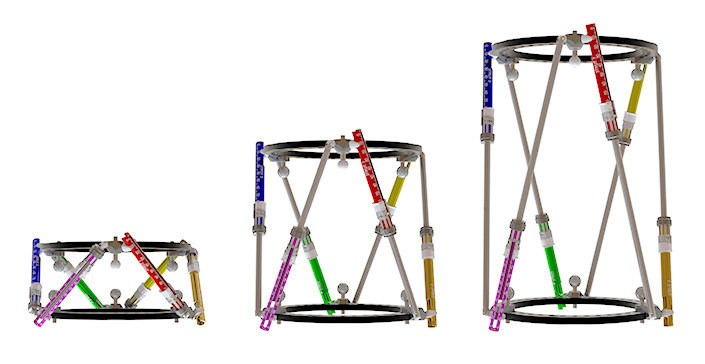
Hexapod fixators are medical devices used in orthopedic treatment, which usually contain two rings connected by six individually attached adjustable connectors called struts.
AMDT said that the currently available devices use multiple struts with a different range of lengths and the fixators needed to be selected carefully for each individual surgery, as they may create complexity in managing inventory, part-selection, and intra-operative ring attachment.
AMDT has introduced new design for its SixFix hexapod device, in which the six struts are pre-assembled into one compact unit.
In addition, the assembly of struts unfolds to easily connect to the rings and eliminates difficult strut exchanges by providing a full range of lengths with a single strut design.
AMDT president and CEO Patrick Mullaney said: “While the SixFix software alone represents significant improvements and advantages in ease-of-use to the surgeon, these major benefits will be compounded with the introduction of the truly innovative SixFix hexapod.
“While we are confident the SixFix innovations will be widely appreciated and accepted by surgeons, we are most excited about the potential positive impact we will have on the patient experience.”
The company claimed that the new device eliminates the need to exchange struts, simplifies inventory, saves times, and provides for greater patient comfort. The single-SKU strut assembly is also expected to enable the device to be sterile packaged for ease of use, convenient storage, and efficient portability for diverse case scenarios.
The fixation systems currently available in the market requires surgeons to manually measure and input values, into optional software in order to create a prescription that would achieve a corrected deformity and a healed fracture.
AMDT said that its patented SixFix DACS software was cleared by the FDA in November 2018, and is capable of reducing time and effort required to generate a prescription detailing the strut adjustments necessary to correct a deformity.
The SixFix system was developed by AMDT product development vice president Michael Mullaney, who has also developed a web-based implementation of the forward kinematic solution that solved the challenge of the crooked hexapod frame on a crooked bone.
Mullaney said: “The SixFix device provides sufficient descriptive positional data to the SixFix software to enable us to create an accurate 3-D replica of the frame and deformity.
“We are also able to replicate the correct orientation regardless of how the radiographs are presented. The SixFix device and DACS are far more powerful and accurate tools than my prior deformity correction application as well as more intuitive, faster, and easier-to-use.”





